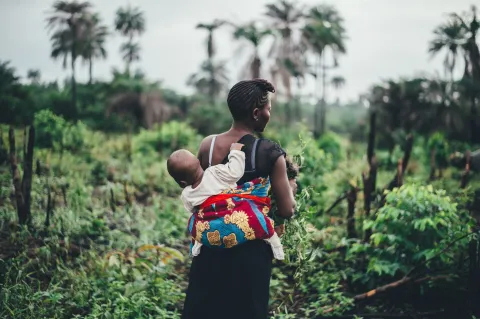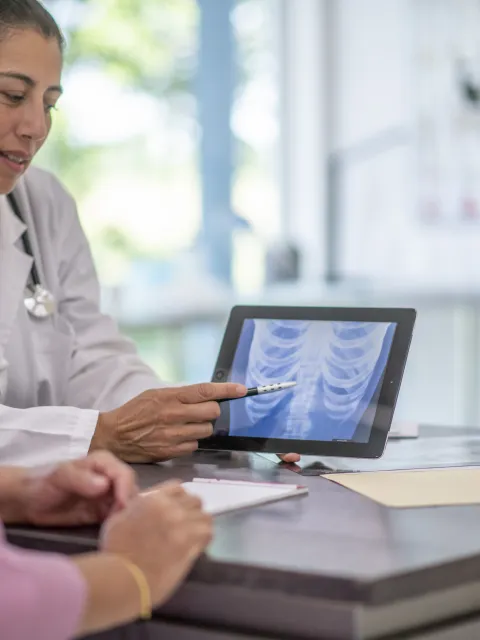Healthy living is a fundamental human right
A person’s socioeconomic circumstances can impact their risk of cancer, chances of survival and quality of life. Resulting inequities in health must be addressed so that everyone can attain the highest possible standard of health.

Key messages
- Different socioeconomic circumstances can lead to disparities in the level of awareness about cancer and access to prevention and treatment, with some populations at greater risk of developing cancer.
- Social norms and attitudes also exert important influences on the way cancer is understood and lived, diagnosed and treated.
- Outreach programmes, education and targeted investments in quality services can help overcome these disparities and address inequities in health care provision and access.
The circumstances in which people are born, grow up, live, work and age influence their perceptions and understanding of cancer and its risk factors. Differences in income levels, employment, education and geographical location (rural or urban settings), or what is known as “the social determinants of health”, mean that the risks that contribute to developing cancer are greater in certain populations relative to others. Disparities are found between countries and regions around the world as well as between populations within countries.
Specifically, risk factors include reproductive, occupational and environmental factors; limited knowledge and awareness of cancer that can lead to misinformation and misconceptions about cancer; chronic infections; and greater difficulties in accessing prevention services, early detection and screening programmes, cancer and pain medicines, therapy and palliative care.
Social norms and attitudes related to gender, sexual orientation, ethnicity, disability and old age also exert important influences on the way cancer is understood and lived, diagnosed and treated. Stigma and discrimination are deeply intertwined with other socioeconomic factors, compounding the negative impact on a person’s exposure to health risks.
A new report by Dr Sonali Johnson, Head of Advocacy, UICC, “The Social Determinants of Health and Cancer”, published this week on the occasion of World Health Day on 7th April under the theme “Building a fairer, healthier world”, provides an in-depth look at how health inequity can be addressed through advocacy and action.
“Addressing the socioeconomic factors that cause ill health and result in health inequities is crucial in order for everyone to attain the highest standard of health, regardless of race, religion, political beliefs, social or economic situation. This right is enshrined in both the WHO Constitution and the UN Declaration of Human Rights.”
– Dr Sonali Johnson, Head of Advocacy, UICC
Social determinants are not set in stone or predetermined; they can be modified, a person’s situation can be improved, their knowledge of cancer increased, their access to services made easier. This means that many of the resulting differences in health status are avoidable. Outreach programmes, education (on health risks as well as to raise awareness and overcome stigma and discrimination within the medical profession and among the general public), and targeted investments in quality services designed to be accessible by all populations, are all actions that can help reduce the health inequities observed between populations.
Inequity vs Inequality in health
- Inequality refers to the uneven distribution of health or health resources
- Inequity refers to unfair, avoidable differences in health care or health outcomes
The report analyses a number of social determinants that create inequities between populations and how they can lead to poorer health outcomes. These include gender norms and discrimination; low socio-economic status; structural and societal barriers for indigenous and minority populations; limited access to health promotion; early diagnosis, treatment and care among rural populations; lack of attention to older adults; and structural and societal barriers among refugees and internally displaced populations.
These factors cannot be tackled in isolation as they are often found in combination and reinforce one another. The report emphasises that they must be addressed comprehensively, for example in national cancer control planning efforts.
A National Cancer Control Plan or NCCP is a key strategic tool for a country to assess and prioritise its needs, mobilise its resources and implement the most efficient measures and interventions in the national context to reduce the country’s cancer burden. In particular, an NCCP must take into account the inequities in health with an analysis of the specific challenges facing underserved and vulnerable populations.
Health authorities can then adopt an approach that takes into account and welcomes the participation of these populations, which will not only improve the chances of overcoming structural barriers but also cultural challenges that may otherwise limit the acceptance and use of key health services. Finally, access must be based on need, not the ability to pay and financial support must be made available so that no one fears falling into poverty because of the cost of medical care.
“A fundamental step in addressing the social determinants is through cancer surveillance. The collection and use of data by population-based cancer registries is important to inform policymaking and track the national cancer burden over time, understanding where there are disparities in the cancer burden among populations and monitoring these, including the success or failure of programmes to reduce incidence, decrease mortality and improve survival.”
– Dr Sonali Johnson, Head of Advocacy, UICC
An NCCP that provides easier and greater access to cancer care to all populations is also essential to achieving Universal Health Coverage (UHC). Only by laying the groundwork for more equitable outcomes in cancer care, by understanding and addressing the social determinants that underpin inequities, can all individuals truly enjoy the fundamental right to health promised by UHC.
Key messages
- Different socioeconomic circumstances can lead to disparities in the level of awareness about cancer and access to prevention and treatment, with some populations at greater risk of developing cancer.
- Social norms and attitudes also exert important influences on the way cancer is understood and lived, diagnosed and treated.
- Outreach programmes, education and targeted investments in quality services can help overcome these disparities and address inequities in health care provision and access.
Last update
Friday 28 May 2021
